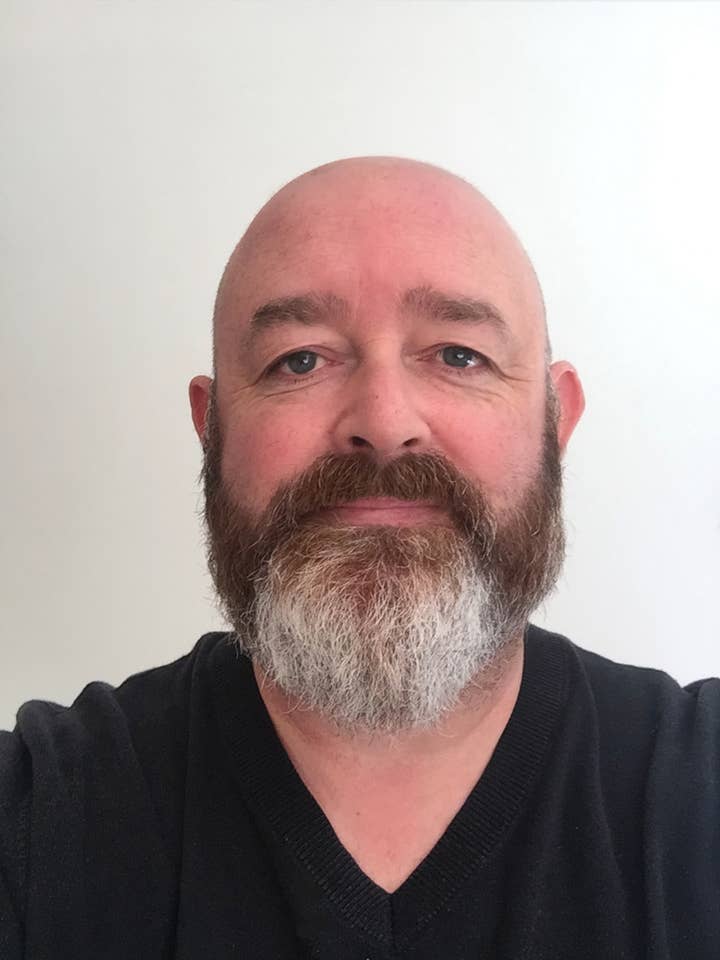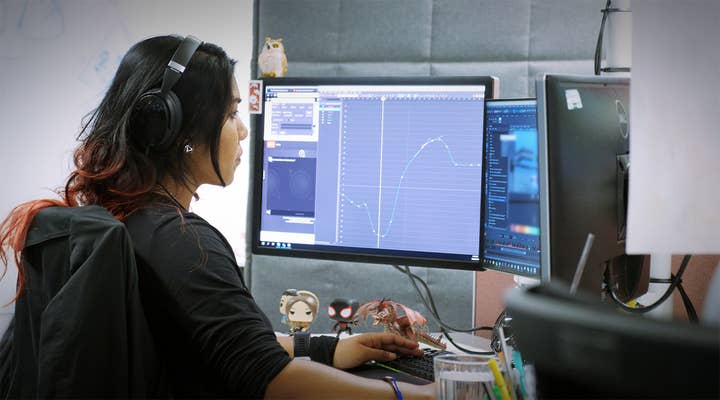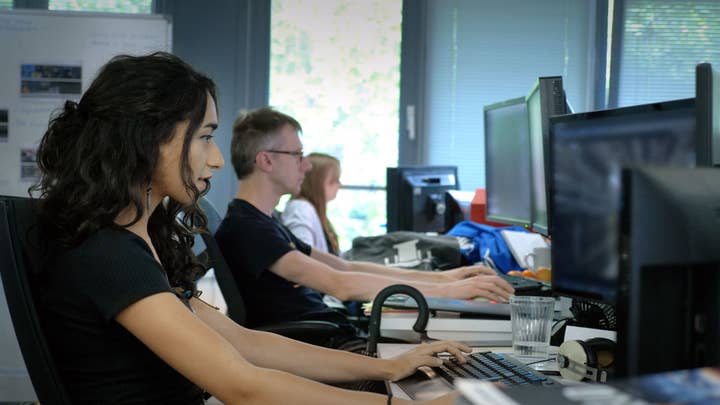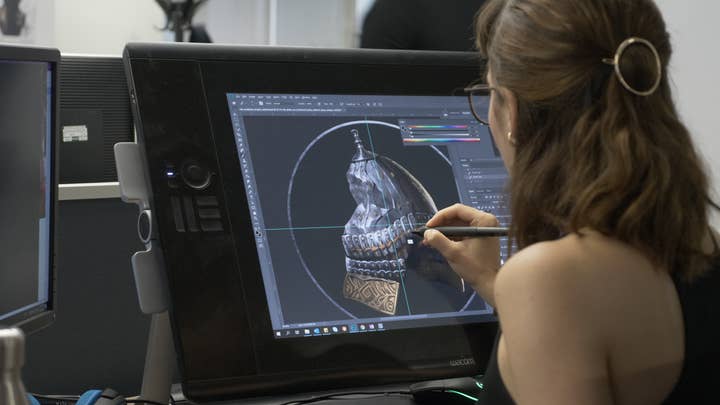The five Ps of better creative management
Creative Assembly's Joe Chetcuti offers tips on how you can maximise your own creativity and that of your team
Sign up for the GI Daily here to get the biggest news straight to your inbox
How do you improve your creative process? Make lots of mistakes and create a bunch of problems.
Whether you're right at the beginning of your creative career or experienced as heck, I hope there's something for everyone to learn here. We'll go through the philosophy of creative management, identify the key stages in creative ideation, setting a clear process, helping your team get the best from themselves and finally, principles that can guide you. There's actionable takeaways and simple tips throughout.
Here are my five Ps for better creative management1. Philosophy
What guiding principle underpins the successful delivery of better creative? Quite simply it's a combination of time, mistakes and problems. A successful creative team needs a clear problem to solve and the time to make lots of mistakes when doing so.
An effective creative leader will create this dedicated time and space (physical or online) to generate ideas. Along with the time needed to generate lots of ideas, the team needs to feel comfortable ditching ideas too. Ideas that aren't used are not failures or wasted. They inform decision making. They are useful directional dead ends on the dungeon quest to find the creative gold.
It's often a costly mistake to fixate on getting to the 'right' idea quickly. This can lead to problems later in development. So, take time, have lots of ideas and ditch more ideas than you save.

How long do you need? Well, depends on what you've got. It could be ten minutes to think quietly about how to solve a simple problem without knee-jerking a solution. Or it could be weeks and months to work with a team to develop concepts over multiple sessions.
Identifying how much time and space you need depends on multiple factors such as experience levels, the team, deadlines and budget. No matter what you have, carving out the time to generate ideas rather than going straight onto execution will pay dividends in the long run.
Now, identifying a problem. This is tied up with the whole process of briefing, a never-ending story of different tools, approaches and attitudes. I'm going to keep it simple: the brief should simply identify the main problem to solve. Why a problem? Well, there is value and energy in problem solving.
The objective may be for new characters, a trailer script or game mechanic. The problem identifies the main barrier to delivering that. An objective-driven brief may say, "We need an exciting new trailer that showcases the attributes of characters X, Y and Z." But a problem-solving brief would say, "How do we showcase characters X, Y and Z whilst keeping the cinematic short and interesting enough to deliver view-through?"
It's the same objective, but one with a clear problem to solve that drives the creative thinking. The combination of the objective and problem is where the creative happens. Leave it to chance and the team may end up solving the wrong problem; you end up with your characters fully introduced, as specified in the brief, but you end up making a 30-minute snore-fest.
This approach makes the brief more compelling, focused and (guess what?) interesting for the creatives. This is an overlooked part of good briefing. An initial brief needs to be re-written as a creative brief, focussed solely on the problem to solve – and it should excite the creatives.
Yes, do signpost supporting information, but don't confuse a hundred-page game design doc, dusty brand guidelines and a ten-year-old report on the state of games as a fundamental part of a successful brief.
In summary, improve your creative process by creating problems and making mistakes, lots of them. My whole career in a nutshell.
Remember:
- Negotiate for the right amount time and make sure your team gets it, uninterrupted
- Have lots of ideas and get used to discarding them freely
- Identify the core of the problem to solve
- Re-write the brief as a problem
- Signpost supporting information

2. Process
Okay, so we have our problem-defining brief, allocated time and willing team. What next?
Adopt a staged approach to creative development when planning your time and activity. A staged approach sets everyone's expectations, gets the team all working on the right phase at the right time, and allows for clear review points.
And remember that creativity is not a moment, it's a process. You can break the creative process down into four clear stages:
- Immersion
- Simmering
- Ideation
- Reviewing
Immersion
Start by getting to know your product. Demand as much orientation as you can. If it's an existing title, don't assume you know it all. Go back to basics, look at it again with fresh eyes. Every time.
Review the obvious competitors and the wider category, too. Grab everything you can and build a picture. Save it all to a document that you can review, share and go back to. Identify category-wide approaches that may help you see gaps and opportunities. This can help you decide if you need to break any category norms.
Along with direct competitors and the wider gaming category make sure you look at comparators too. Film, books, TV, art, design, advertising, social media content, galleries, exhibitions. Identify comparators that have solved the same or similar problem that you have.
Simmer
Once you done your immersion, it's best to let it all simmer. Take some time away from the problem. Overnight or the weekend. Maybe change to a different project for a bit or do some admin tasks.
This is where the brain does its magic. We all know the cliché of having your best ideas in the shower or when walking the dog. It's true, but it only happens when the brain has had time to digest all the information you've fed it with. So, creativity may seem like an event, a eureka moment, but it's a waterfall process. The more experienced you become, the shorter and quicker that process becomes.
It's often a costly mistake to fixate on getting to the 'right' idea quickly. Take your time, have lots of ideas and ditch more ideas than you save
Ideate
Okay, time to put pen to paper. And that's the first tip: pen and paper are the simplest, the most direct interface to your brain. I would suggest initially working with a buddy system. Set teams of two on a problem to do the initial ideation. Leapfrogging ideas and drawing on each other's energy is a powerful way to generate ideas.
Use the brief and immersion research as initial stimulus to orientate you to the task in hand. Aim for twenty ideas in one hour. It's a really useful way to generate ideas with a volume goal in mind. Use paper and pencil, whiteboard or, if remote, a tool like Miro for online collaboration.
Remember in an idea session there should be no 'no'. Avoid the temptation to critique ideas as they come out. 'No' kills any creative flow. It has a place, just not now. You could also consider bringing stakeholders into the idea session and treat them as creative team members. Just make sure they understand the brief and problem you're solving first. The sense of inclusion will boost the whole process.
Finally, also consider bringing someone from outside the usual team into the ideas session. You'll be surprised at the positive impact.
Review
This is the cold light of day part. Take a break and then review the ideas you've created. Ditch the ones that don't or won't work. Be ruthless. Kill your darlings and take forward winning ideas with a brief rationale for each. The rationale should simply state how the idea solves the problem identified in the creative brief.
Which ideas do you take forward? Those that have the potential to fulfil the brief. Those that you think will work. Never use that you 'like' or 'dislike' an idea as a rationale. Don't allow your team or stakeholders to either. An idea works because it answers the brief.
Remember:
- Follow a staged approach
- Spend one hour coming up with 20 ideas
- Kill your darlings
3. Practice
Down to business: what stages you should consider when delivering a creative project, from brief to delivery.
The best way to kickstart a project is talking. It's a good habit to get in to. Far too many activities are started by email, Teams and Slack with groups only getting together to discuss things when something starts going wrong. More time upfront means an easier journey later. Getting emailed a brief is fine but without a pre-meet or follow up call there's just too much left to the quirks of interpretation.
Get to know the why, what and who of the brief by listening and questioning. Where has it come from? What's the game or business problem? Who needs to be involved? Who is best to work on it? And if there's no brief, create one from the initial meetings. Don't get hung up on process. Make progress not perfection.
Combine objective and problem. Leave it to chance and the team may end up solving the wrong problem
Get the right people in the room. Whether you're discussing the brief or putting the team together. Keep it simple. Do you really need everyone? You may eventually end up with a pretty big crew in the delivery phase but plan to have a small, manageable steering group who can always get to project meetings and have something to offer at the start.
As discussed earlier, define the brief properly. And don't forget such things as deadlines, mandatories, expected outputs, budget and what will be measured. Work out a quick plan for the immersion work: what to review, where to start, where to explore.
For the ideation phase, allow time and space without interruptions. Set regular check-ins with the team. If they're flying, leave them to it. If they're stumped, review what they've been through and what they've learnt so far to stimulate ideas. You may want to sense check emerging ideas with your stakeholders. An informal chat can help solidify strong ideas or kill 'no go' ones.
After you've agreed what will be taken forward into production, review all your mandatories. How will the ideas work culturally across markets, with localisation, age ratings, and any legal and copyright issues? Have you engaged with all necessary stakeholders?
To help everyone with the production phase make sure you have a top-level schedule of what is coming and when. Ensure there's a detailed monthly resource schedule and a weekly scheduling update for following two weeks. This will help everyone have visibility of workloads so you can all look out for each other.
Moving into production will involve lots of craft, from art direction, concepts and assets through storyboards, scripts and animation to layout, composition, typography, UX/UI etc. At this stage, the creative process is normally more agile and fluid – which is fine.
If you do need to go back to the ideation stage for any reason, then make sure you treat this as a waterfall process again. Creating or tweaking overarching concepts that need to be applied across multiple crafts when they're in motion rarely works effectively. Stop. Think. Agree. And start again.
After delivery, make sure working and final files are catalogues and archived. Finally, review any feedback or learnings and implement improvements to your process.
Remember:
- Talk
- Create the right team
- Plan your time (and fight for it)
- Don't forget the mandatories
- Be agile when moving into production but have a plan
- Be wary of feature creep
- Archive, review and learn
4. People
How do you get the best out of creative teams? Help them to help themselves.
Creativity is often viewed as a messy process (and it is!). Consistency, structure, support and safety can help turn that mess into something useful. Rather then stifling creativity, clear structures can help it blossom. Developing and implementing clear processes helps create safe spaces in which the messy business of creativity can happen. You can apply the same structured approach to developing your team.
Firstly, you have to be a visible champion for your team. Negotiate to make sure they get the time they need. Fight for the right equipment and work environments. Celebrate their successes, small and large.
Secondly, define what good is. Work with the team to set your own creative standards. Identify work that you aspire to. Share it and keep on discussing and sharing new work from within the industry and any other category, too.
Avoid the temptation to critique ideas as they come out. 'No' kills any creative flow
I have a monthly session where one person brings a piece of work to share. It doesn't have to be game-specific. It could be an advert, industrial design or book, anything. They present why they either love it or hate it. We then discuss and share our thoughts as a group. It helps set our personal and team standards. It also builds a sense of community through shared activity. It can be a hybrid activity with some in studio and some calling in.
Also, encourage ad hoc sharing through a non-project specific 'creative' channel. Allow time out of studio for learning through events and conferences. One of the best ways to measure ourselves as creatives is to get out and meet other creatives.
Thirdly, actively identify individuals' personal development needs and objectives. If you have a larger team make sure your team leaders do exactly the same with their reports. Clearly identify these development needs and separate what are hard craft skills, such as using software, and softer personal skills, such as presenting or leading a meeting. Have a monthly personal review with each team member to review progress and set future plans.
Finally, you should actively mentor and guide individuals. There's little point in setting people personal objectives if you don't help them get there. The more successful and better your team are, the more you will be too. Provide supervision and guidance to drive projects through each stage, identify and remove bottlenecks. Be there for the team.
Remember:
- Be a champion for the team
- Define what 'good' is
- Set personal goals and help people achieve them

5. Principles
I have several beliefs that underpin my approach and reactions to creative. It's useful to identify what makes you tick. After all, you're a creative leader (or aspire to be). Those who work with you must understand what good looks like to you. If you're not sure, then you may compromise your position. So, in no particular order:
- Humans are emotional not rational and connect through wit, humour, anger, fear, love, hatred, spirituality, jealousy, hubris, pride. Make sure your work aspires to connect on these human levels.
- The human memory is the first and greatest search engine. Whatever we do it has to be memorable. Forget the algorithms.
- Great creative comes from lived experiences. A phrase, a look, a conversation, a view. Seek them out and keep your creative reservoir filled.
- Think of others. Care enough to explain, be on time, listen, let others speak. Succeed as a team, don't take the credit. Maintain version control, file things where they can be found, come prepared, protect each other's time.
- The best creative is delivered on time, within budget and to specification.
- Have a plan. You can always change a plan.
In summary, my five Ps are based on experience and a bit of common-sense. No matter how messy and scary the initial blank piece of paper may be, your creative output will be elevated by a bit of rigour. A disciplined approach makes that blank piece of paper a little less scary, too.
More GamesIndustry.biz Academy guides to Making Games
Our guides cover various aspects of the development and publishing process, whether you're a young game developer about to start a new project or an industry veteran:
- How to develop a game design document
- From demo to debut: Turning a game jam project into a full release
- The Bala brothers' guide to finding the magic
Sign up for the GI Daily here to get the biggest news straight to your inbox
